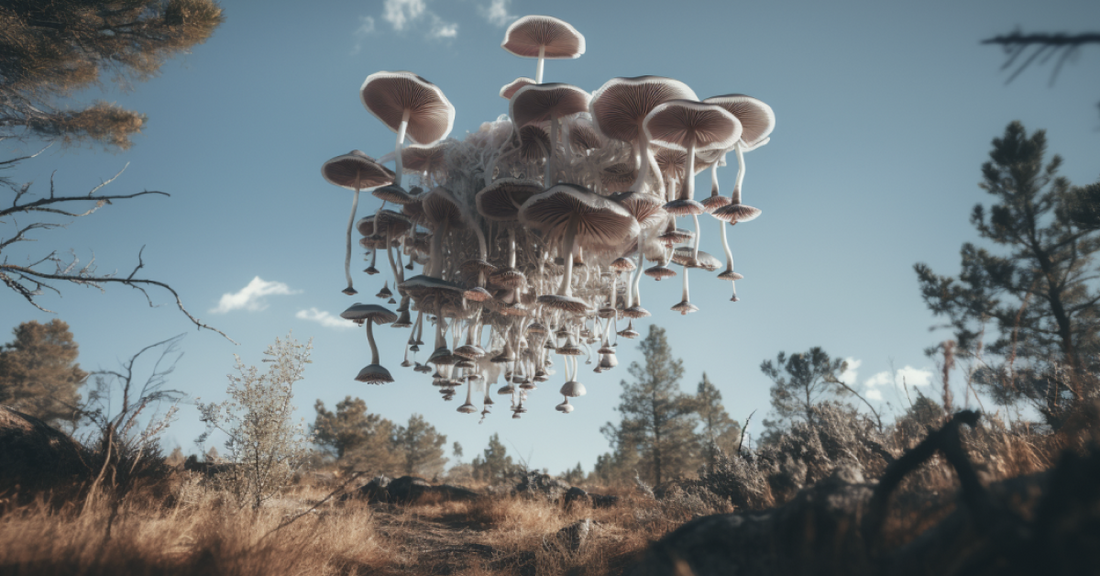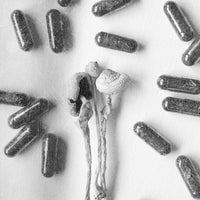There’s always an element of risk in taking a psychedelic. As with surfing or skydiving, you can set yourself up for success by making the journey under the most favorable conditions, but some aspects of the experience will always be left to chance. That has its pros as well as its cons because embracing the unknown can be an important part of the adventure.
Be that as it may, the latest science tells us that genetics may play a part in predetermining how our psychedelic voyages will go.
A disclaimer before we delve further into this: Certain statements about DNA’s influence on entheogenic experiences have been disputed. More research is needed before any conclusive declarations can be made on this. In any case, set and setting are probably at least as important as genetic factors in this area.
Nevertheless, this is a fascinating subject and well worth exploring.
The Importance of Serotonin
To understand the science of psychedelic experiences, we need to understand serotonin, a neurotransmitter that acts as a sort of chemical ambassador between the brain and the rest of the body. Serotonin is linked to functions such as mood, perception, cognition, sleep, sexual desire, appetite, digestion, nausea, blood clotting, wound healing and bone health.
In the 1950s, researchers noticed LSD’s structural similarity to serotonin and postulated that the former’s psychoactive effects might be connected to this. Similarly, scientists have found that the chemical structures of psilocin and psilocybin, the all-important ingredients in psychedelic mushrooms, are incredibly close to that of serotonin.
We now know that “classic” psychedelics like LSD, psilocybin and DMT activate serotonin 2A receptors by binding to the receptor and mimicking the action of serotonin.
A recent study found that seven different serotonin receptor variants had statistically significant impacts on the potency of the psychedelic compounds LSD, psilocin, 5-MeO-DMT and mescaline. One of the key takeaways: Roughly 20 percent of all people have a variant in the 5-HT2A receptor gene (HTR2A), which encodes the serotonin receptors. Such individuals have extra serotonin receptors, which means they may experience the effects of hallucinogens more intensely.
“Imagine these receptors as doors that the drugs knock on,” explains Dorna Pourang, MUD\WTR’s psychedelics advisor. “Everyone has these 'doors,’ but some people might have a few extras because of variations in their 5-HT2A receptor gene.”
She adds that according to the results of the study in question, these extra receptors could either amplify the experience or dampen it, depending on the specific psychedelic drug. “This means that for the same drug, different people might have entirely different experiences,” she says.
Variants, Variations and Variables
The University of North Carolina School of Medicine study also linked a genetic variant known as Ala230Th to decreased response to psilocin, while the variant Ala447Val appeared to reduce the effects of two of the four psychedelic compounds used in the trial.
Bryan Roth, the study’s lead author, has stated, “Based on our study, we expect that patients with different genetic variations will react differently to psychedelic-assisted treatments. We think physicians should consider the genetics of a patient’s serotonin receptors to identify which psychedelic compound is likely to be the most effective treatment in future clinical trials.”
Pourang notes that while this study provides important insights, its findings are based on in vitro pharmacological investigations, meaning its subjects were not living organisms. “These conditions, while controlled and scientific, do not perfectly replicate the complex biological and psychological processes occurring within a human body during a psychedelic experience,” she says.
She adds that while this study’s data provides a foundation, additional research is required, especially for future studies that consider the interplay of genetic factors with psychological, environmental and cultural variables.
DNA and Ketamine
Somewhere between 10 and 20 percent of people have a variant in the CYP2B6 gene, which is involved in the liver’s ability to metabolize drugs. For those who have this variant, it takes twice as long to metabolize ketamine and clear it from the body. As a result, ketamine experiences may be longer, more intense and/or hampered by drowsiness, frightening hallucinations, dizziness, confusion and other undesirable reactions. That’s especially true for those who take the drug by intravenous injection as opposed to smoking or snorting it.
Dr. Dave Rabin, PhD, MD, Apollo Neuroscience’s cofounder and chief medical officer, is trained in ketamine and MDMA-assisted therapy. He says the only time he’s seen this issue come up is when ketamine is prescribed for long-term use on a daily or near-daily basis to manage chronic pain.
He adds, “In patients who are very sensitive to ketamine or who have a history of slow metabolism of ketamine or other substances, we recommend that they spit out the [sublingually administered] ketamine after swishing it and not swallow it. That avoids some of the side effects and the longer-lasting aftereffects of ketamine, which aren’t harmful, but can be uncomfortable or unpleasant.”
Mental Health Risks
Certain genetic elements appear to play an active part in determining the degree to which you’re putting your mental health on the line by tripping. For instance, some people may have extra copies of the C4A gene, which is involved in getting rid of unneeded neural connections to clear out storage space in the brain. Excessive amounts of C4A might make this “synaptic pruning” more erratic, creating a greater risk of mental illness.
On the opposite side of synaptic pruning is the growth of new neurons, which involves a gene called NRG1. Approximately 15 percent of the populace has the T/T genotype, meaning they have too many copies of the NRG1 protein. Such people may be at greater-than-average risk of psychosis when they take hallucinogens.
Another factor that may increase the risk of mental illness for psychedelic voyagers is the disrupted in schizophrenia (DISC1) gene. There’s evidence for and against the notion that this gene presents a greater risk of psychosis, schizophrenia and bipolar disorder, but those who want to play it safe might be wise to forego the psychedelic experience until more is known.
The aforementioned Dr. Roth has warned that people with serious psychiatric conditions like schizophrenia or bipolar disorder should not take psychedelics. Numerous non-professionals have echoed this assertion based on personal experience.
Stay Tuned …
According to Pourang, personalized medicine, including gene-guided dosage determination, may become increasingly common in the days ahead.
“However, it's important to remember that while genetic factors play a significant role, they are just one of many factors, including age, weight, gender, diet and other concurrent medications, that influence drug response and optimal dosage,” she offers.
She adds that while researchers have started to look at the effects of psychedelics on gene expression, neuroplasticity and the influence of individual genetic differences on a person's response to these substances, this field of study is still in its infancy.
“It's important to note that many of the conclusions drawn from research in this area are speculative and based on our understanding of the mechanisms of action of psychedelic substances and our knowledge of human genetics,” she says. “There is still much we don't understand about how these complex systems interact. The field would benefit from additional studies investigating these relationships more closely.”
Damon Orion is a writer, musician, artist, and teacher based in Santa Cruz, CA. He has written for Revolver, Guitar World, Spirituality & Health, Classic Rock, High Times and other publications. Read more of his work at damonorion.com.
Read More: Queering Psychedelics: An Intentional Intersection
Read More: 9 Tips for Psychedelic Integration




